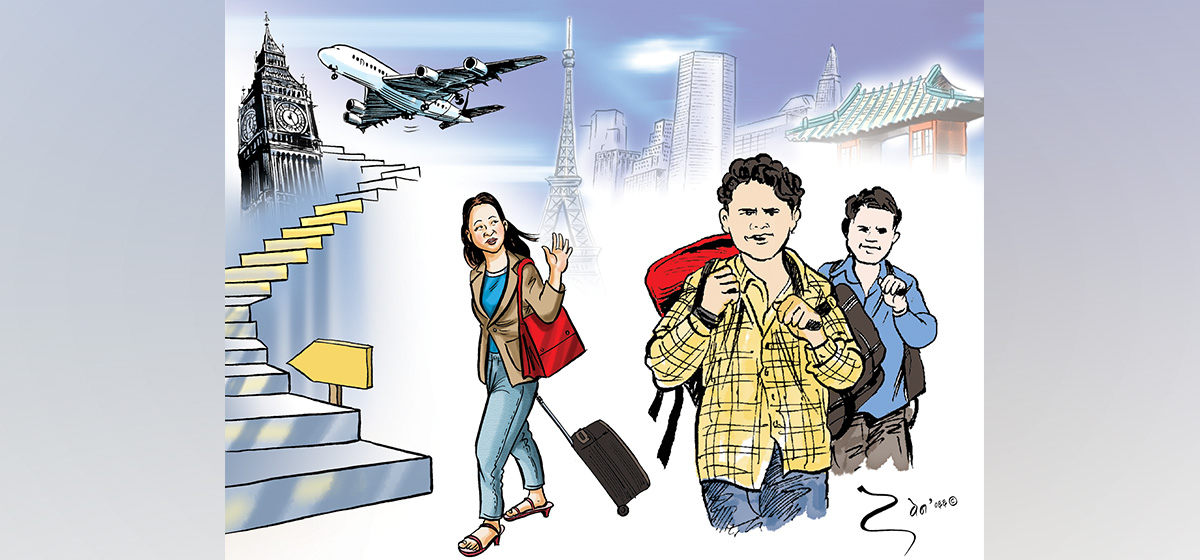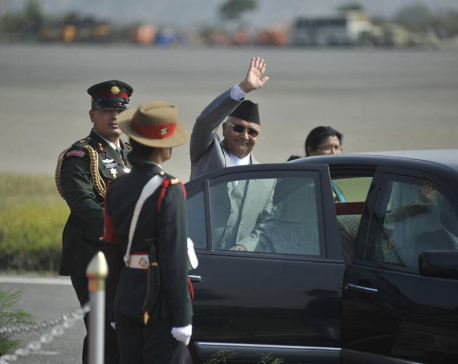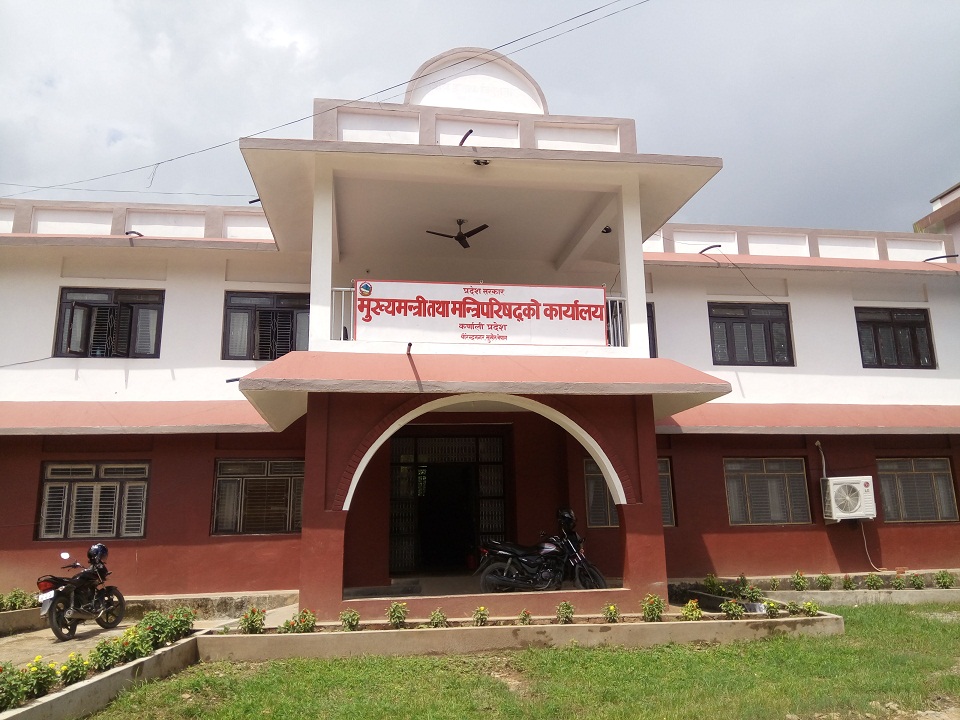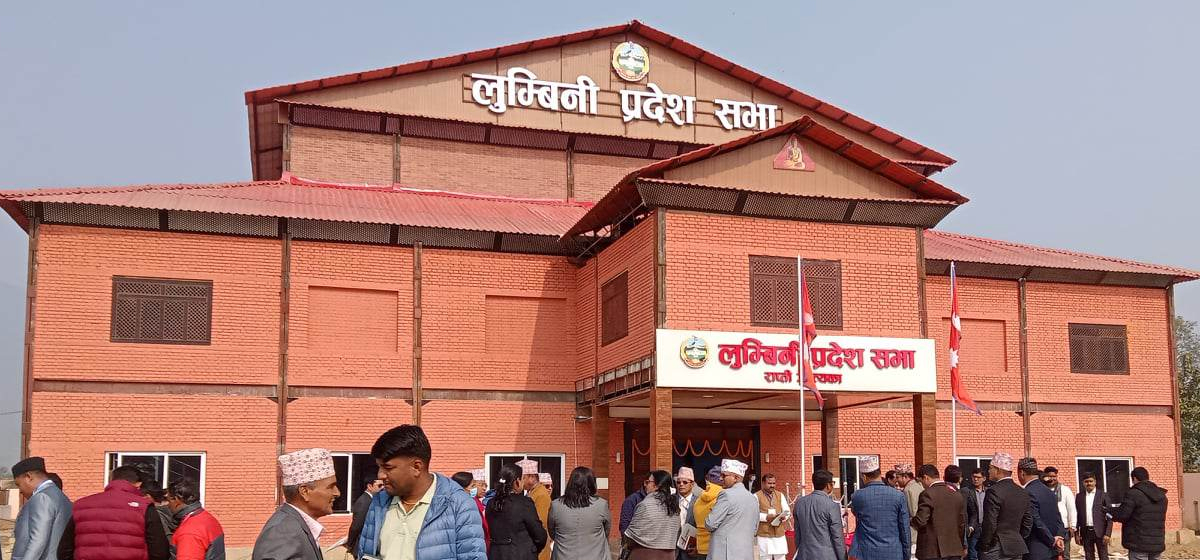
OR
Opinion
Why are Nepalis Leaving the Country?
Published On: May 21, 2023 08:30 AM NPT By: Hari Prasad Shrestha

More from Author
- Why Federalism has Become Risky for Nepalese Democracy
- Hunger is a Serious Problem in South Asia
- Tourism Can Be A Catalyst For Change in Karnali Province
- Nepal’s Southern Border Has Become An Open Regional Crossroads
- Opening a new gateway for Kailash Mansarovar Yatra through Nepalgunj-GunshaNagari flight
A society, where exploitation and inequality are at its highest level and unemployment is a major problem, can hardly appeal to the people to stay within the country with a hungry stomach and under such conditions. They would certainly try to migrate to other countries in search of a better life. Migration is generally attributed to poverty, destitution, unequal distribution of resources, lack of opportunities, geographical variation of labor demand and so on. The current global estimates of 2020 is that there are around 281 million international migrants in the world, which equates to 3.6 per cent of the global population.
South Asia is the sub-region with the highest number of emigrants. In the early-2020s, 43.4 million people from South Asia were living outside their country of origin. In South Asia, Nepal is experiencing a huge out-migration compared to its size of the population and gaining status as a labor-exporting country. Out-migration of Nepalese youths to foreign countries increased especially after restoration of multi-party democracy and liberalization of the economy in 1990. The uncertain political and deteriorating economic situation has been the major driving force for Nepalese youth to look for alternatives abroad.
Majority of the people in Nepal are frustrated as they are neither finding jobs inside the country nor any support from the state for their livelihood. The skyrocketing inflation and high prices of food and necessary items have worsened their life. Their children are either not going to schools or dropping the classes frequently. If they fall sick it is not easy to get free treatment and the majority of them are suffering from powerful loan shark mafia and other forms of social exploitation and discrimination. The latest population census outlined that Nepal's population growth rate is declining as a result of around half of its workforce having migrated to other countries for education, employment and residency purposes.
Nepal’s out-migrants can be grouped into low skilled migrants, students, emigrants (under high-skilled immigration programs of different countries), asylum seekers, forced migration, family members, temporary labor migrants, illegal, or undocumented migrants and business migrants. These migrants can also be divided into two large groups, permanent and temporary. Permanent migrants intend to establish their permanent residence in a new country and possibly obtain that country's citizenship. Temporary migrants intend only to stay for a limited period of time, perhaps until the end of a particular program of study or for the duration of their work contract or a certain work season. Both types of migrants have a significant effect on the economies and societies of the chosen destination country and the country of origin.
Based on the economic survey of last year, the number of new and re-approval workers for taking the permit for foreign employment has reached 5,665,226, out of which 5,348,814 are males and 316,412 are females. Out of it, around 90% workers got approval for unskilled and semiskilled destinations of Gulf countries and Malaysia and the remaining 10% received approval for skilled manpower for other destinations.
Every year, the Ministry of Education in Kathmandu approves around 100,000 No Objection Certificates for Nepali students going to Australia, Canada, the UK, Japan and the US. Australia, Japan and Canada have a share of two-third Nepalese students followed by the UK, the USA and other countries.
Apart from students, approximately one million Nepalis have permanently settled in Europe, America, Australia and other developed countries through permanent residency, naturalization, asylum, diversity lottery etc. These Nepali migrants in advanced countries hardly return back to Nepal as most of them migrate there with intention to permanently settle there. However, Nepalis working in the Gulf countries, Malaysia and India, return to Nepal after completion of their temporary jobs and end of employment contracts.
Due to the open border between Nepal and India, people in large numbers from Nepal temporarily migrate to India in search of jobs. According to the 2011 Indian census, there were 571,721 Nepalis living in India while the figure in 2001 was 596,696. Nepali census figures are somewhat different and the number from 2001, at 589,042, is somewhat similar to the Indian census, but in 2011 there is significant variance, with the Nepali census showing 720,892 living in India. These figures, more or less, have been endorsed by the 2022 report of the International Organization of Migration. However, the Embassy of India in Nepal has stated that nearly 8 million Nepalese live and work in India, which seems to be a highly inflated figure, similar to how once Home Minister of India, Rajnath Singh, said that there are 1 crore Indians living in Nepal. The 8 million figure of the embassy has no scientific basis as the national census 2021 has figured out the total number of economically active population in Nepal is only 9.76 million.
Every day more than 2000 Nepalis travel abroad for work especially in the Gulf countries and Malaysia and the majority of them are employed in dangerous jobs with no real legal protection from either the Government of Nepal or the host governments. The arrival of boxes with dead bodies of migrant workers, who die from extreme heat and cold and exploitation by foreign employers, has been a regular scenario almost every day in Kathmandu Airport. Besides, the problem of illegal human trafficking of Nepalis to the Gulf countries and other advanced countries has been a lucrative business for traffickers in Nepal. The recent exposition of the fake Bhutanese refugee scandal and involvement of high political and business authorities reveals the deep-rooted problems of human trafficking in Nepal.
Even under enormous difficulties, Nepalese working abroad are sending money to Nepal and their remittances are vital for the survival of Nepal's economy. Based on Nepal Rastra Bank’s statistics, Nepal’s remittance earnings increased 27 percent to Rs 689.88 billion in the first seven months of the current fiscal year. As a result of increased remittance earnings, the gross foreign exchange reserves increased 13.8 percent to Rs1,383.33 billion in mid-February 2023 from Rs1,215.80 billion in mid-July 2022.
For the protection of the migrant workers, some ILO Conventions cover a wide area of social and labor issues including basic human rights, minimum wages, industrial relations, employment policy, social dialogue, social security and other issues. They stipulate that states actively facilitate fair recruitment practices and transparent consultation with their social partners, reaffirm non-discrimination, establish a principle of equality of treatment between nationals and regular migrant workers in access to social security, conditions of work, remuneration and trade union membership.
Migration of people from one country to other countries is a global phenomenon. Small numbers of migration of population to other countries are considered as a natural movement. However, if migration becomes a major source of employment and foreign currency for a country that indicates extreme situations of poverty and inequality gap between the haves and the haves not in the society. According to the data of the National Census 2021, the population of Nepalis living abroad is 2,169,478, which is the highest ratio based on the total population compared to other countries of South Asia region with their migrant workers and population.
You May Like This

Missing Nepal differently
While in an advanced American hospital, I thought of hospitals back home, villages where women are forced to give birth... Read More...

What Nepal needs is India's friendship and support for growth: Nepal PM Oli
In an exclusive interview to The Hindu, Mr. Oli says the bitterness of past relations have been put behind them,... Read More...

Social trend of migration effecting more migration
KATHMANDU, Feb 9: Rather than solely due to the lack of job opportunities in the home country, the existing social trend... Read More...




Just In
- NEPSE loses 3.24 points, while daily turnover inclines to Rs 2.36 billion
- Pak Embassy awards scholarships to 180 Nepali students
- President Paudel approves mobilization of army personnel for by-elections security
- Bhajang and Ilam by-elections: 69 polling stations classified as ‘highly sensitive’
- Karnali CM Kandel secures vote of confidence
- National Youth Scientists Conference to be organized in Surkhet
- Rautahat traders call for extended night market hours amid summer heat
- Resignation of JSP minister rejected in Lumbini province
















Leave A Comment